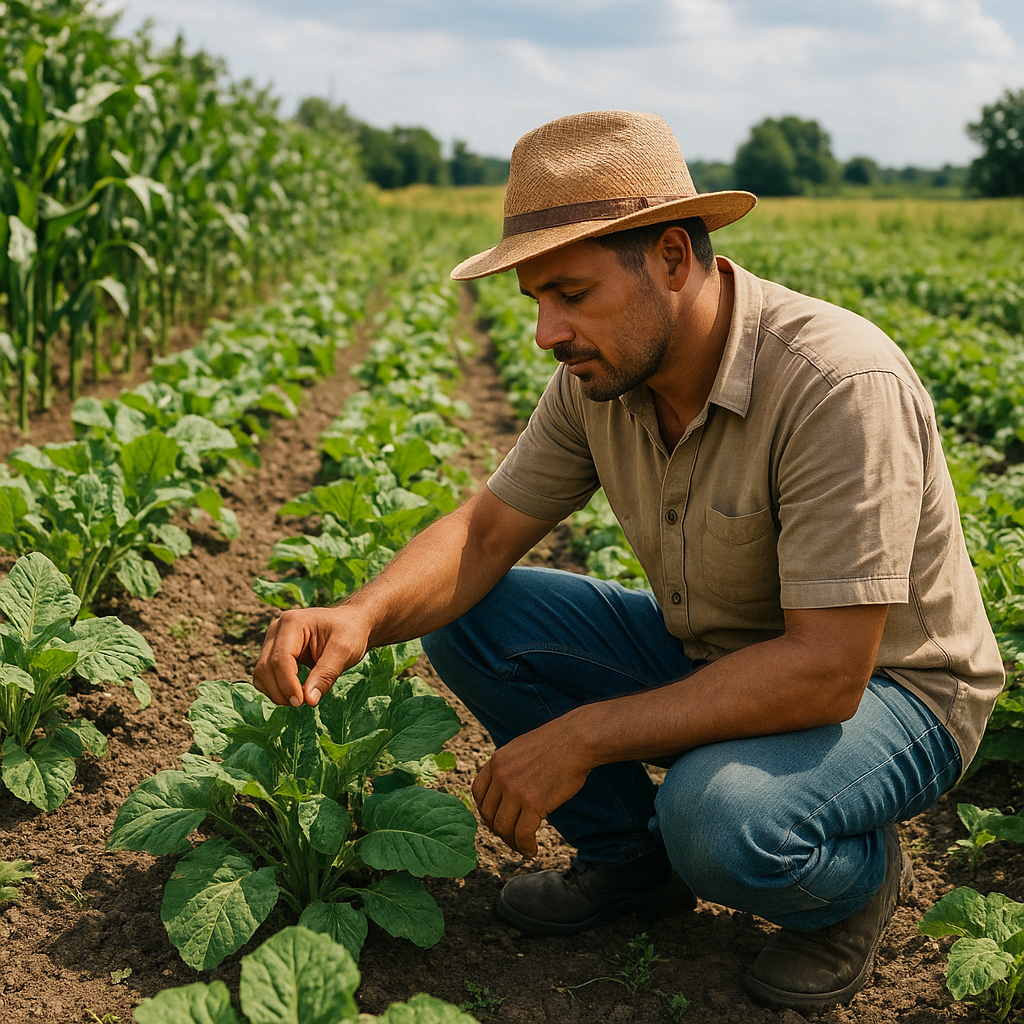
Maintaining an eco-friendly and profitable farm is a challenge that many modern farmers face. As the world becomes increasingly aware of environmental issues, the agricultural sector is under pressure to adopt sustainable practices while still ensuring economic viability. This article explores strategies and practices that can help farmers achieve this balance.
Understanding Eco-Friendly Farming
Eco-friendly farming, also known as sustainable agriculture, involves practices that are environmentally sound, economically viable, and socially responsible. The goal is to meet current food and textile needs without compromising the ability of future generations to meet their own needs. This approach to farming emphasizes the conservation of resources, reduction of pollution, and the maintenance of biodiversity.
One of the key principles of eco-friendly farming is the reduction of chemical inputs. This includes minimizing the use of synthetic fertilizers and pesticides, which can have harmful effects on the environment. Instead, farmers are encouraged to use organic fertilizers and natural pest control methods. Crop rotation, cover cropping, and the use of compost are some of the techniques that can help maintain soil fertility and reduce the need for chemical inputs.
Another important aspect of eco-friendly farming is water conservation. Efficient irrigation systems, rainwater harvesting, and the use of drought-resistant crop varieties are some of the strategies that can help reduce water usage. Additionally, maintaining healthy soil through organic practices can improve its water retention capacity, further reducing the need for irrigation.
Balancing Profitability with Sustainability
While adopting eco-friendly practices is crucial for environmental sustainability, farmers also need to ensure that their operations remain profitable. This can be challenging, as some sustainable practices may require initial investments or result in lower yields. However, there are several strategies that can help farmers achieve a balance between sustainability and profitability.
One approach is to diversify farm income streams. This can be achieved by integrating different types of farming activities, such as crop production, livestock rearing, and agroforestry. Diversification not only spreads risk but also allows farmers to take advantage of different market opportunities. For example, agroforestry systems, which combine trees with crops or livestock, can provide additional income from timber, fruits, or nuts.
Another strategy is to tap into niche markets that value sustainable products. Consumers are increasingly willing to pay a premium for organic and sustainably produced goods. By obtaining organic certification or participating in local farmers’ markets, farmers can access these markets and potentially increase their profit margins.
Cost management is also crucial for maintaining profitability. By reducing input costs through sustainable practices, such as using on-farm resources for fertilizers and pest control, farmers can improve their bottom line. Additionally, investing in energy-efficient technologies, such as solar panels or wind turbines, can reduce energy costs in the long run.
Implementing Sustainable Practices
Transitioning to eco-friendly farming requires careful planning and implementation. Farmers need to assess their current practices and identify areas where improvements can be made. This may involve conducting soil tests, evaluating water usage, and analyzing energy consumption.
Education and training are essential for successful implementation. Farmers should seek out resources and training programs that provide information on sustainable practices and technologies. Collaborating with agricultural extension services, research institutions, and other farmers can also provide valuable insights and support.
It’s important to start small and gradually scale up sustainable practices. This allows farmers to monitor the effects of changes and make adjustments as needed. For example, a farmer might begin by implementing crop rotation on a small section of their land before expanding it to the entire farm.
Overcoming Challenges
Despite the benefits of eco-friendly farming, there are challenges that farmers may face during the transition. These can include financial constraints, lack of access to resources, and resistance to change. However, there are ways to overcome these obstacles.
Financial support from government programs, grants, and loans can help farmers invest in sustainable technologies and practices. Additionally, forming cooperatives or partnerships with other farmers can provide access to shared resources and reduce costs.
Building a strong support network is also important. Engaging with local farming communities, joining sustainable agriculture organizations, and participating in workshops and conferences can provide encouragement and motivation.
The Future of Eco-Friendly Farming
The future of farming lies in sustainability. As global populations continue to grow and environmental challenges intensify, the demand for sustainable agricultural practices will only increase. By adopting eco-friendly practices, farmers can play a crucial role in ensuring food security and environmental health for future generations.
Innovation and technology will continue to drive the evolution of sustainable farming. Advances in precision agriculture, biotechnology, and renewable energy will provide new tools and opportunities for farmers to enhance their sustainability efforts.
Ultimately, the success of eco-friendly farming depends on the commitment and collaboration of all stakeholders, including farmers, consumers, policymakers, and researchers. By working together, we can create a more sustainable and profitable agricultural system that benefits both people and the planet.

